Dekoni Blue Planar T50RP MKIII Mods – Electric Punch
Dekoni Blue is a headphone made by the guys who make earpads and mods, so you know they come with the best earpads you could ever want. They also have a really pocket-friendly price of 250 USD. The comparison list will include HIFIMAN Sundara, Sivga Phoenix, and SoundMagic HP1000. The pairings list will include FiiO M11 PRO, iBasso DX220, and Lotoo Paw 6000.
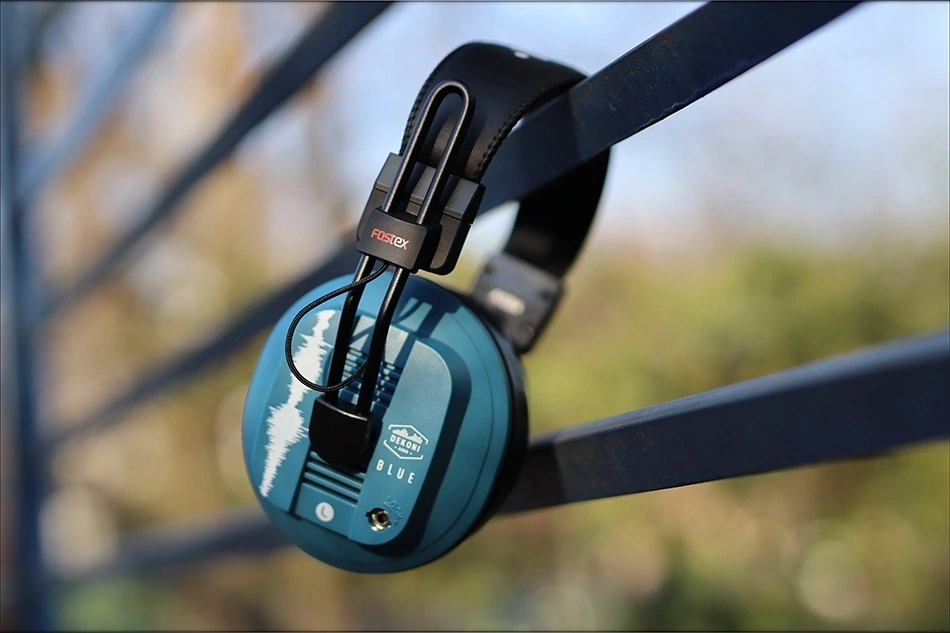
Introduction
Dekoni is a luxury company that makes some of the best earpads and eartips you will ever be able to purchase. They are not known for headphones, so their Dekoni Blue is made in collaboration with one of the best companies out there, Fostex. Now, I don’t want to add too much fluff and hype things too much, but I’m an Otaku of sorts, I love anime, and even work as the Director of a gaming studio. This means that whenever we get to talk about Japan and Japanese stuff, I get excited. This is the case with Dekoni and Fostex as well, and I am excited. They employed some of the older Sennheiser staff members, so we’re dealing with customer support at levels never before thought possible, for such a small company. Dekoni also offers a warranty that matches their aura of a luxury company. If you want to spend a little less and don’t fear having zero warranty, Drop is also selling the Dekoni Blue for 200 USD.
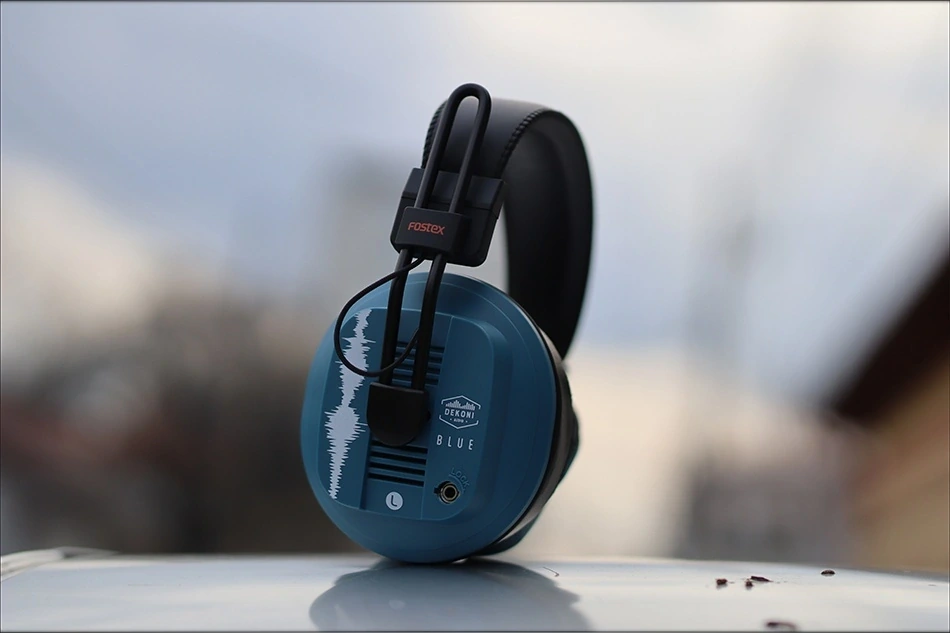
It should be noted that I have absolutely no affiliation with Dekoni, I am not receiving any incentive for this review or to sweeten things out. I’d like to thank Dekoni for providing the sample for this review. Every opinion expressed is mine and I stand by it, the purpose of this review is to help those interested in Dekoni Blue find their next music companion.
Product Link
You can grab a pair of the Dekoni Blue Headphones from www.amazon.com here: https://amzn.to/3tzhchP
They also go live on Drop sometimes, where they are sold for a little less: https://drop.com/buy/dekoni-fostex-blue-planar-magnetic-headphones
Packaging
First things first, let’s get the packaging out of the way:
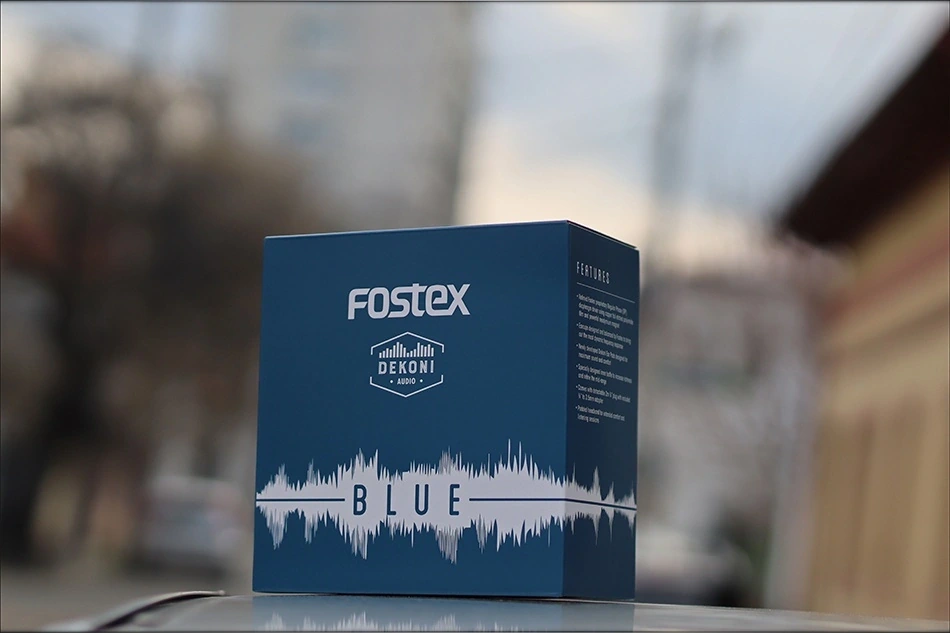
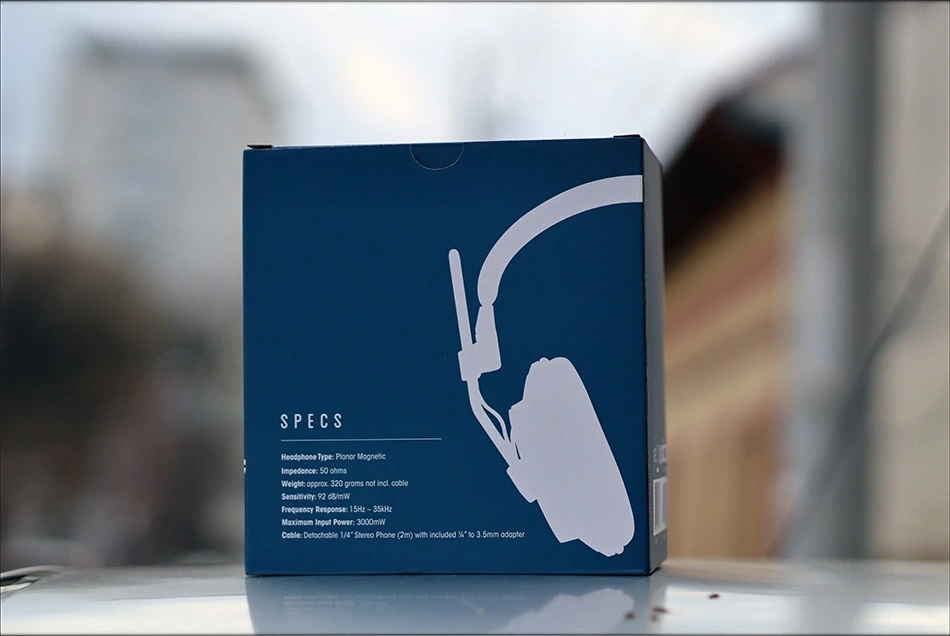
While I was really excited about the headphones themselves, the unboxing experience has proven to be a total disappointment. The package does not include a carrying solution, nor a secondary cable, nor spare pads, you basically just purchase the headphones and the default cable. The ear pads are really awesome as we’ll explore, but as far as the package goes, they are not that great.
Build Quality/Aesthetics/Fit/Comfort
Starting with the headphones, you should know that they thirst for power. Worse than a young politician even, Dekoni Blue have a really low SPL and a somewhat high impedance, so we’re looking at a pair of headphones that will need at least a 300-500 USD DAC/AMP to drive them, or a high-end DAP.
I would be willing to say that they are perfectly portable, thanks to their design, but that power hunger is not the only issue. They have a proprietary cable that you won’t be able to replace, and it is single ended only, with a large 6.3mm connector. This reminds me a lot of older Ultrasone headphones, like their DXP and Studio Signature series. The cable is not tangle prone at all, and it does not have microphonic noise either, making it perfect for portable usage.
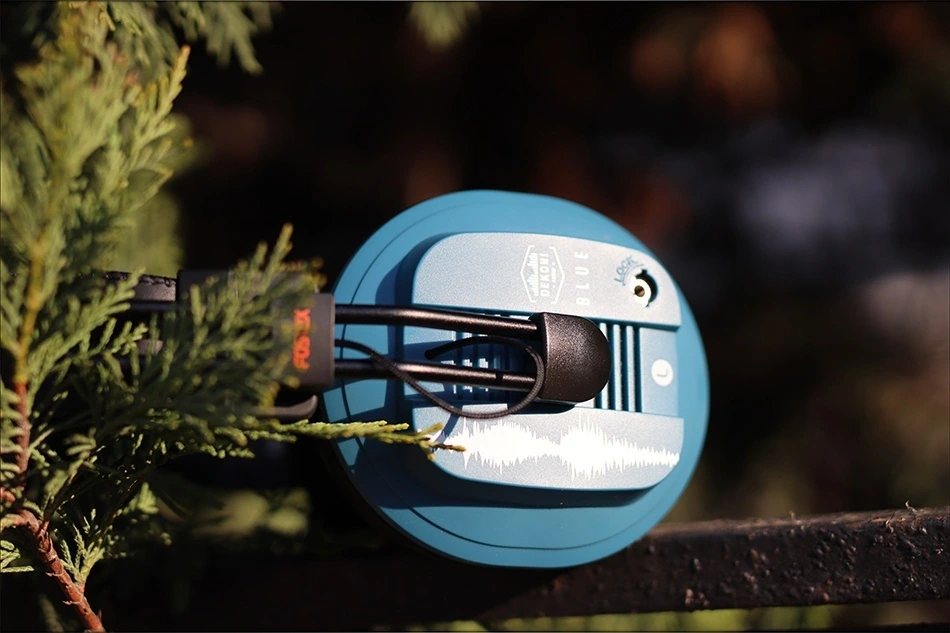
The shape of the headphones is simply sweet, they sit so nicely on my head, and the earpads are indeed so awesome that I can’t think of any headphone I would recommend better in this price range. Nothing else at all, the Dekoni Blue is just perfect for my head and ears. The earpads are full over-the-ear, and the headband is soft, easy to bend, but offers a good amount of clamp force.
The headphones are also semi-open so they leak a bit, but not that much, they also offer between 10 and 15 dB of passive noise isolation. The adjusting mechanism does not have a specific set of sizes, it is smooth and can go as much as you need. The earcups also swivel in every direction possible, making the Dekoni Blue a really easy to adjust and fit headphone.
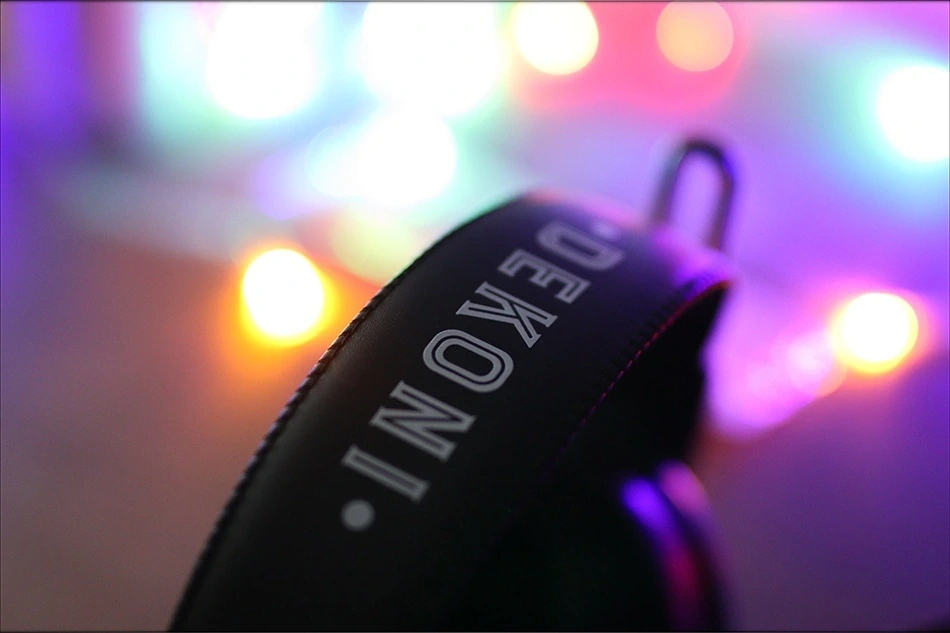
The Blue color actually looks beautiful in person, and while I feared they would resemble a communist or a cheap plastic piece, they are stylish, somewhat edgy, and the whole headphone is simply really well thought. Besides the need for power, and the cable being only single ended, I absolutely love the fit, ergonomics and design of the Dekoni Blue and can’t emphasize enough how much I recommend them for their build.
They are based on the mighty T50RP MKIII, and they are a mod of them, and to be more precise, it is the only mode officially approved by Fostex. This is like Fostex admitting that their original T50RP MK III headphones didn’t do as much damage in general as the Dekoni Blue does, so we have not only my backing, but also Fostex, at their risk of losing direct clients too.
Sound Quality
The sound of the Dekoni Blue can generally be described as somewhat thick, bassy, warm, well extended in both the lows and the highs, open, with a natural soundstage, excellent instrument separation, good detail, and excellent punch. Given the fact that they have very low SPL, they are sensitive to how well your source reacts at high volumes, and they have extremely low distortion. This being said, most sources handle very high volumes worse than very low volumes, so you may get some distortions from the amplifier with the Dekoni Blue.
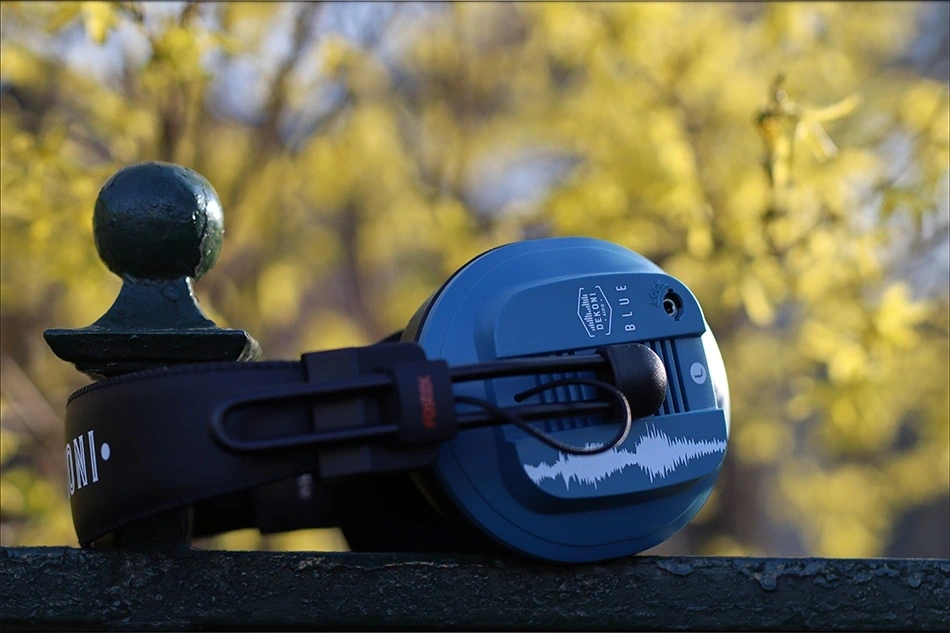
The bass is really deep and the thunderous rumbly type. It is not the thumpy type much, and has excellent body and substance. It tends to extend down to the lowest octaves and with zero distortions. The bass can totally massage your head with songs like Om – Meditation Is The Practice Of Death, and it is able to recover quickly enough to keep the pace in songs like Mori Calliope – Off With Their Heads.
The midrange is actually the highlight for the Dekoni Blue for me. The midrange is generally dark in tonality, liquid and very clear. The mids are tainted by the bass to being warm and somewhat thick, and the upper midrange is not very enhanced, so the sound can be laid back and relaxed. The soundstage is natural in size, with excellent instrument separation. The thing I like the most here is the ability of the Dekoni Blue to render really aggressive music inoffensive. This means that even if you’re listening to something with trumpets or a lot of harshness, Dekoni Blue will make that a walk in the park, and you can bump the volume all the way to the maximum without deafening mistakes dawning on your music.
The textures of the Dekoni Blue are really smooth, with an emphasis on musicality and overall substance, all instruments having a really natural presence. If you ever played the piano, you probably noticed how the piano has some resonance in the lows too, how each key has a volume to the sound. This is where I noticed Dekoni Blue doing a really good job at reproducing that weight of every instrument naturally.
The treble is smooth, but not entirely recessed, and there is a slight protrusion in the Frequency Range at around 9kHz, giving some spice to the sound. I love this as it keeps Dekoni Blue interesting and enjoyable, even more than some consecrated headphones like HD600 from Sennheiser, all while keeping Dekoni blue much less fatiguing than HD660S. Dekoni Blue is a really generalist headphone, as it works really well with Metal, Rock, Punk, Pop, and everything in between. Classical in particular is a delight with them, and they are somewhat better in everything than Brainwavz Alara that I reviewed in the past, and which were quite a bit more expensive. The comparison is relevant, because the signature of the Dekoni Blue is really similar to that of the Alara. I am mentioning all of those things especially because I’m in love with the detail in the treble. Most smooth and laid back headphones tend to lack the treble sparkle so much that they get boring and really unengaging, but Dekoni blue is fairly natural, they are interesting enough to be enjoyable with EDM, Rock and even Emo, so you will hear some of those cymbal crashes, albeit they won’t be as energetic and bright as they are with headphones like Ultrasone Signature DXP or Soundmagic HP1000.
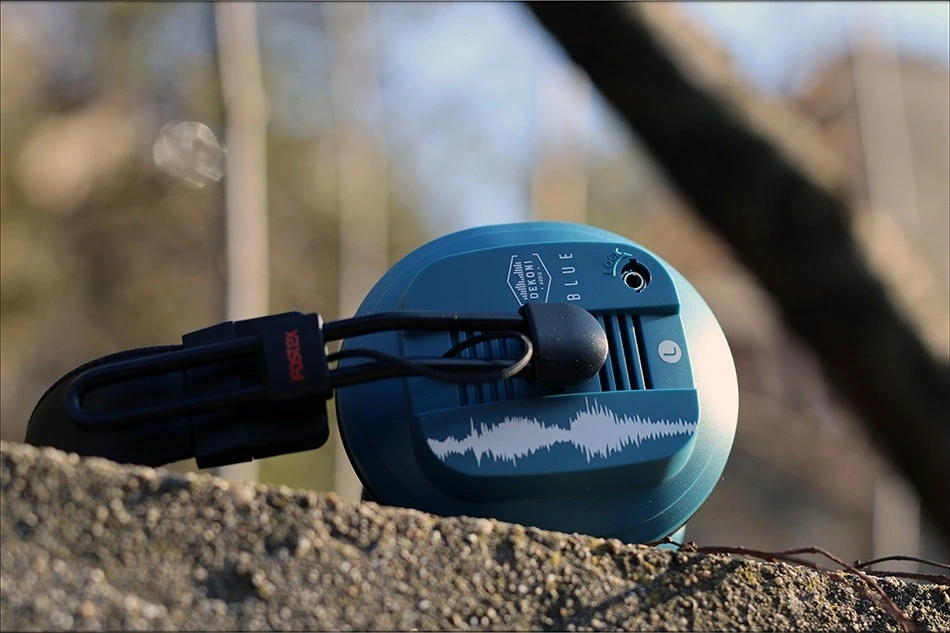
There is more headroom left in the treble, and you can totally pep up the highs to make Dekoni Blue more sparkly, also enhancing detail, but if you’re not happy with the bass, you probably won’t be able to add too much, although they are already a delightful basshead headphone with tons of lows and impact, so you probably won’t need more. Despite the Dekoni Blue being a Planar Magnetic Headphone, they sport plenty of dynamics, keeping things interesting and fun with all music styles.
If you need a few keywords that you should etch in your mind and associate with Dekoni Blue, then Basshead, Well Separated, Thick, Full Bodied, Laid Back, Smooth, Liquid and fairly detailed for the price are the best ways to describe them.
Comparisons
The main comparisons for the Dekoni Blue are the Sivga Phoenix, Soundmagic HP1000, and HIFIMAN Sundara. There are so many awesome headphones in this price range, the entry-level towards the midrange, that I am happy to be alive. I will be honest with you, it really brings some real joy to me, being able to know that even if I gave up reviewing and focused on something else entirely, I would be able to have an awesome experience with music, for a very good price. When I first started reviewing, this was not possible, and I am thankful to all those companies that make it possible.
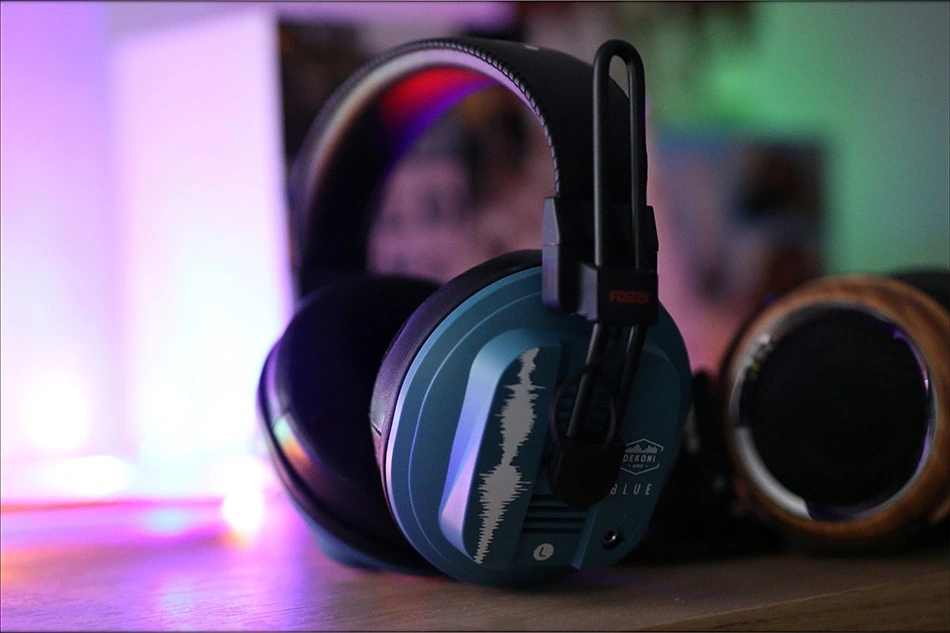
Dekoni Blue vs Sivga Phoenix (250 USD vs 250 USD) – The package is better for the Phoenix, and the cable is also better, replaceable too. The sound is more natural, more V-Shaped and more colorful on the Phoenix. The comfort is much better on the Dekoni blue, and in light of this, I would wear Dekoni Blue for hours, while the Phoenix can be fatiguing to wear after half an hour, having much smaller and thinner earpads. Dekoni Blue has a much better bass, deeper and with more body to each musical instrument, a more laid back sound, with less focus on detail, but still with better dynamics. Phoenix sounds more colorful, more open, has a wider soundstage, a similar instrument separation, but it has a lower dynamic than the Dekoni Blue. Sivga Phoenix isolates less and leaks more than the Dekoni Blue
Dekoni Blue vs Soundmagic HP1000 (250 USD vs 300 USD) – The build quality, comfort and design of the Dekoni Blue are much better than those of HP1000. The part of the HP1000 that is better is the detail of the sound, as they are considerably more detailed, but this comes at the cost of HP1000 being quite fatiguing and quite bright. By comparison, Dekoni Blue is much bassier, with more extension down low, less focus on the upper midrange, and a more natural soundstage. Instrument separation and soundstage are a bit better on HP1000. Generally, I would pick Dekoni Blue for most music, since they are less fatiguing, but if you’re a detail addict, HP1000 is also a good option with a fairly good build quality. Hp1000 leaks much less and isolates more or less the same as Dekoni Blue in practice.
Dekoni Blue vs HIFIMAN Sundara (250 USD vs 250 USD) – Sundara has been an etalon for headphones and comparisons because tons of folks heard them, have them, and even love them after all this time. The build quality of the Dekoni Blue is better, they leak far less and they sit more comfortably on my head, thanks to a softer, thicker headband, and thicker, softer earpads. The cable is better on Dekoni Blue despite it not being replaceable easily. The overall sound is brighter, more open, but rolls off in the bass for sundara. Comparing them side by side, Dekoni Blue sounds far more controlled, cleaner in the bass, more laid back, smoother, relaxed, and fuller. Sundara sounds much brighter, more open, wider, more holographic, but lacks impact in the sub lows, and distorts quite a bit in the bass once you get it loud. Dekoni managed to keep the bass cleaner with better extension for sure.
Recommended Pairings
When it comes to driving the Dekoni Blue, it is almost impossible to drive them without spending some money. They also scale quite a bit with the source, so I recommend something at least midrange or high-end where possible. A heavy desktop amp like the Audio-GD Master 19 is really recommended, but I would be able to live with a portable that has good driving power, like iBasso DX220 w AMP7, or FiiO M11 PRO, or even Lotoo Paw 6000.
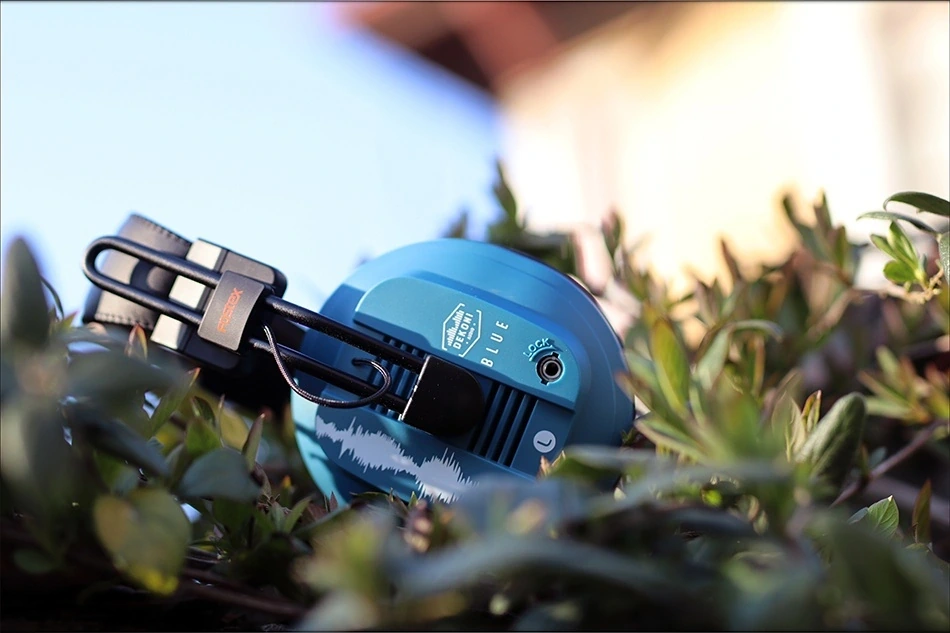
Dekoni Blue + iBasso DX220 (250 USD + 900 USD) – There’s something about DX220 that really makes it awesome, and that is having the option to use multiple AMP modules. Especially with AMP7, there is more than enough power to properly drive the Dekoni Blue, and there is also an excellent sense of space, together with a more aggressive, forward sound. This works well, because Dekoni Blue is a slightly laid-back headphone, and making it slightly more aggressive means making it more natural and direct. The soundstage is also good, and the detail is a bit better than with most sources, also thanks to the more forward presentation.
Dekoni Blue + Lotto PAW 6000 (250 USD + 1200 USD) – I love the gentle sound of PAW6000, and the way it is able to match detail with softness, without taking dynamics away from the sound. This also pairs well with the Dekoni Blue, which presents a really open and dynamic sound with the PAW 6000. The impact is a bit softer, but the sub-low extension is excellent and the treble is well extended yet gentle in presentation and texture.
Dekoni Blue + FiiO M11 PRO (250 USD + 650 USD) – Knowing that Dekoni Blue needs a brighter source, I decided to try and run them from M11 PRO, which is on the neutral-bright-ish side compared to most DAPs. This has proven to have been a great idea, as the pairing is really detailed, wider in soundstage, cleaner, more open and more detailed than your average. M11 PRO has enough power to properly drive M11 PRO at maximum volume with zero distortions, so you’ll be delighted to hear zero fatigue and zero problems with the pairing.
Value and Conclusion
Dekoni Blue has an excellent value, and at the end of the day, it is one of the headphones I would recommend the most to you, if you’ve invested a bit in this hobby and want to see how pure Nirvana looks like, in terms of comfort.
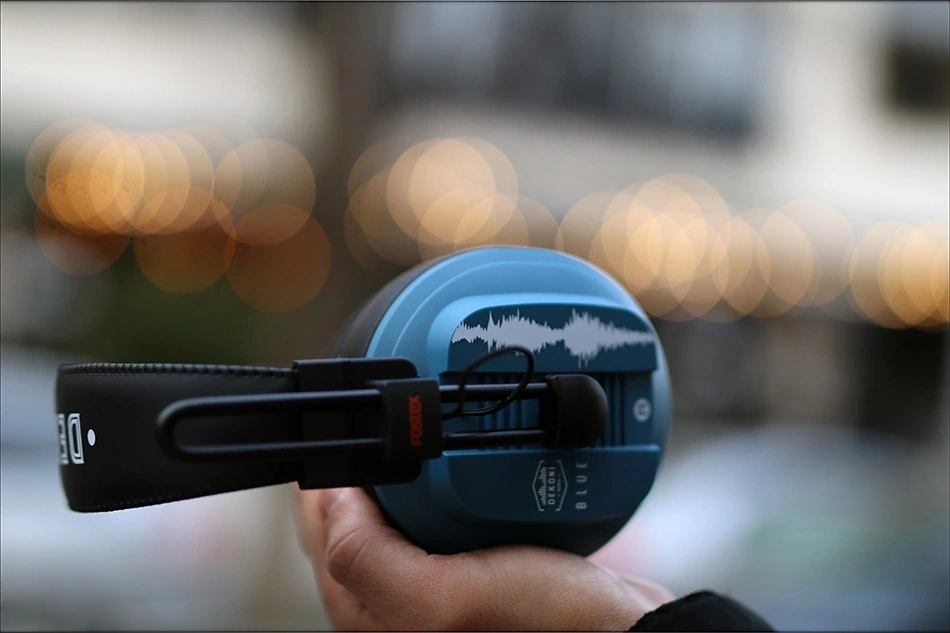
Better yet, even the sound is heaven-like, so they made a headphone that works well with the name of my website, Audiophile-Heaven. The whole excellent comfort with a semi-open design really delighted me over the past few weeks, and while for some products it took me longer to come to a conclusion, with the Dekoni Blue, I was able to get every information I needed rather fast. They are awesome headphones, and they are here to stay.
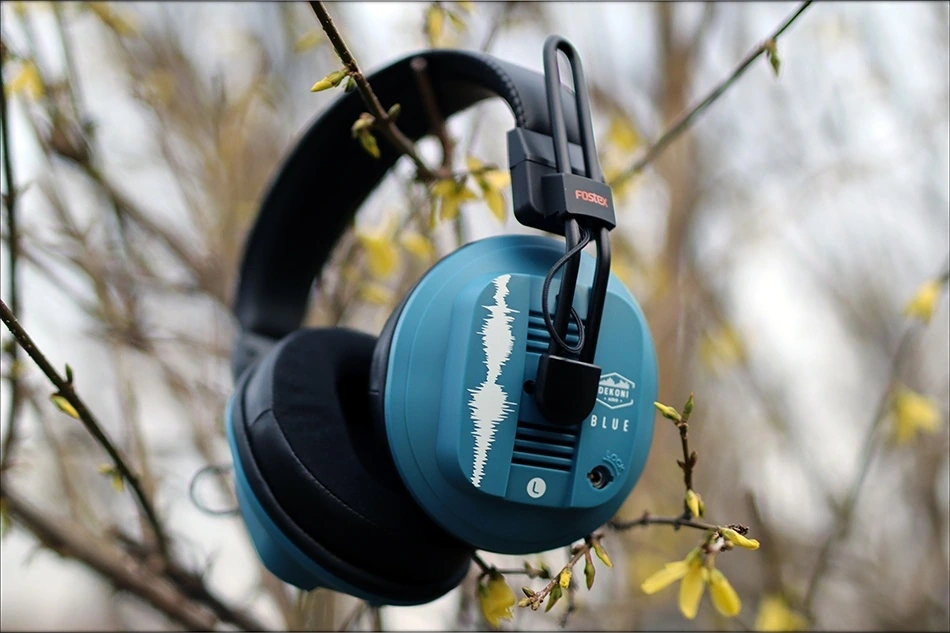
In fact, they will also stay in Audiophile-Heaven’s Hall Of Fame, thanks to their excellent comfort, smooth and musical sound, and naturally, their thunderous and beautiful bass.
At the end of today’s review, if you’re looking for a pair of headphones with an excellent bass, delightful low end extension, explosive and thunderous sub lows extension, and with one of the best comfort you will ever get without spending at last another hundred USD, the Dekoni Blue will fit your head like a glove and fill your heart with joy.
Product Link
You can grab a pair of the Dekoni Blue Headphones from www.amazon.com here: https://amzn.to/3tzhchP
They also go live on Drop sometimes, where they are sold for a little less: https://drop.com/buy/dekoni-fostex-blue-planar-magnetic-headphones
--- Please remember to stay safe, and always have fun while listening to music!---
- If you have a dime to spare, please donate, and help us! It would make the day brighter for me and my wife-
Full Playlist used for this review
We listened to more songs than those named in this playlist, but those are excellent for identifying a sonic signature. I recommend trying most of the songs from this playlist, especially if you’re searching for new music! The playlists are different for Spotify, Tidal and Youtube, and based on the songs I enjoy and are available on each!
https://www.youtube.com/playlist?list=PL_cjBXGmwSHSdGcwuc_bKbBDGHL4QvYBu
https://open.spotify.com/playlist/5J3oloz8Riy9LxEGenOjQ0?si=979ba4f082414be7
https://tidal.com/browse/playlist/330fd544-8e5b-4839-bd35-676b2edbb3d5
--- Contact Us ---
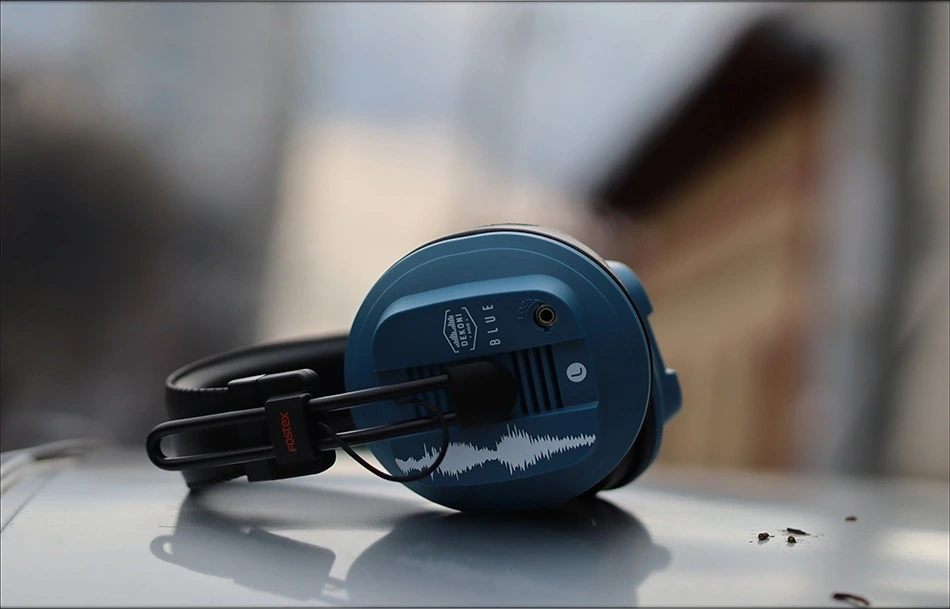






Hey George, I watched your review and came here for some serious reading. I can buy these used from a guy (Importing most of the headphone became a big hassle lately) Do you still think they perform well? I have hoarded quite a few headphones but always wondered how a t50rp or its mods sounded like.
my highest end headphones are Klipsch Heritage HP-3, Focal Clear MG and Sendy Audio Peacock. I also have Hifiman Sundara and Sivga Phoenix which you compared Dekoni Blues to. From these I only find Sivga Phoenix kind of underwhelming and don’t perform up to competition in its price range, maybe a little Sendy Peacock but that’s another topic 😀
Heeey there!!
Hm,… you pose a good question! Given the fact that you found the Phoenix to not be up to its name, and the pacock to be somewhat slightly underwhelming, you probably like a good sub bass extension, which Dekoni has. I think that Dekoni is still fully worth their asking price, and I do think that they are pretty awesome, plus they have a good build quality, and a nice design, but most importantly, you have a large collection, but I think they will offer something that you don’t have in any of your other headphones yet.
Nice writeup! Can’t wait to get a pair of those myself
Hello George! Is Fiio K5 Pro sufficient enough for Dekoni Blue? I want a bass oriented, nice close back headphone (although Blue is like semi-open, I guess) to accompany my Hifiman Deva but I don’t want to buy another dac/amp.
Btw, Nice review, very easy to read. Your reviews makes me confident to buy Deva and K5 Pro 🙂
Hii there! !
I think that K5 PRO is more or less enough, and at this price or even around it, you can’t find much better driving power. Should be tons of fun to use for this pairing~